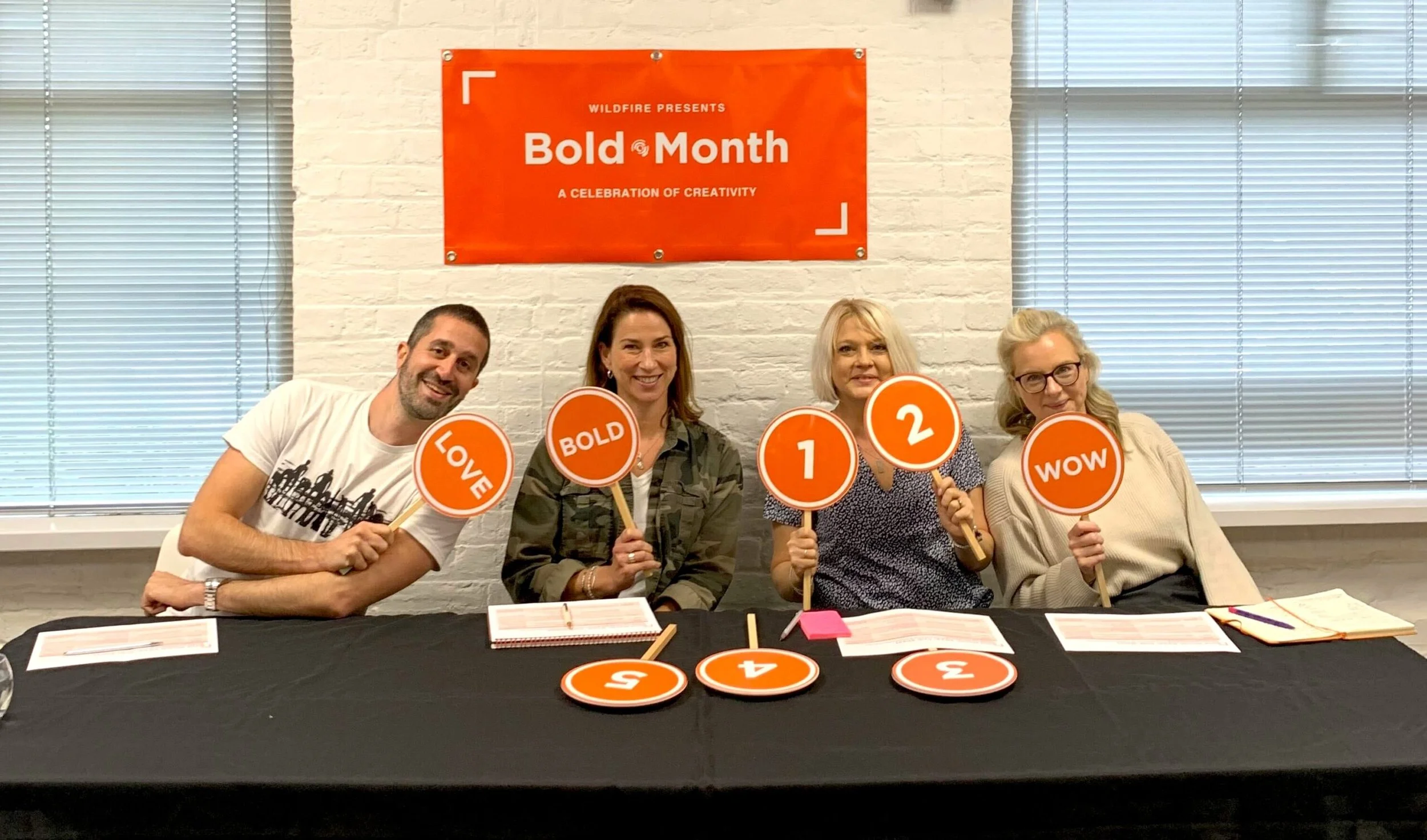Three lessons Bold Month taught us
And that’s a wrap! Bold Month is officially over.
For those of you who haven’t been religiously checking our LinkedIn (shame on you), Bold Month is an initiative we launched this year to encourage bold thinking and creativity across the agency.
Throughout the month we ran a series of creative challenges — from who could make the best AI-generated piece of art to hang in the office, to who could create the best functional balloon sofa.
Needless to say, a lot of fun was had, but there was a serious element to it too — teams had to present recent bold and creative campaigns to the agency and engage in a Q&A about their work.
So, looking back across the whole gamut of activities and presentations, what did we learn from our month of being bold?
Everyone can present
When pitching for new business or presenting an idea to a client, there can be a tendency to give the majority of the talking to the most senior team members. They are the most practised after all and can likely run through the ins and outs of a PR campaign with their eyes closed.
At Wildfire we always aim to give everyone something to say when presenting an idea — we all have a role to play after all. But this experience has taught us not to put limits on the level to which people can present without senior involvement.
In fact, as part of the presentation process, we made a rule that although senior team members could help with deck creation and give feedback on the pitch, they could not take part.
We wanted junior members of the team to have a starring role and get a chance to not only practise pitching but really get to grips with the nitty gritty of the campaign. From objectives to strategy to results — they had to understand, own and present the whole process. And I’m very pleased to say everyone smashed it.
Make training fun (with prizes!)
Training. For a lot of us — probably most — it’s a necessary evil and not something we get excited about. But one thing we learnt during Bold Month is that building training into a challenge is a great way to get people actively engaged with something new without them even realising.
One of our challenges was to create an AI-generated artwork that could hang in the office.
As part of the challenge, we asked people to try different AI image generators to see which they liked most, use Chat GPT or similar to help them with the prompt, and share that prompt along with their entry to help others learn about how they got to their final image. And of course, we had the incentive of a prize, plus the fact that the winning image would forever live on the office wall!
The result was that multiple people across the agency — who up until now hadn’t had any use for AI image generation — learnt about the possibilities of what they could create. Plus, we have even seen this new skill trickle down into our day-to-day work with many starting to use AI image generation to support client campaigns.
Yes, and…
Throughout the challenges we ensured everyone made a conscious effort to encourage ideas, however obscure they might have seemed at the time. I like to think of this approach as being the same as the “yes, and ?…” rule in improv (yes, I did do a drama degree).
If you are on stage improvising, the rule is that whatever the person you are with says, you agree with, and then add to it. This keeps the story flowing and the same can be said for creative brainstorms (or boldstorms, as we like to call them).
If you take a really over-the-top idea and build on it as a collective, the worst that can happen is you are still left with an exciting idea that won’t work. No harm, no foul. But if you don’t test each idea — you say no, instead of yes — the worst that can happen is you miss the opportunity to run a really cool attention-grabbing campaign.
For example, in our final pitch challenge, we had some pretty ‘out there’ ideas pop up, and instead of telling people that the budget wouldn’t stretch that far or throwing in other real-life considerations, for the sake of the exercise we let teams run with them.
This resulted in some really out-of-the-box approaches to our brief, one of which we plan to use for an upcoming client campaign.
All in all, Bold Month was a huge success. From hidden training to team building and even a new campaign idea along the way. It’s safe to say, we will be bringing it back for another year.
Watch this space!
For more great creative campaigns check out B2Bold


